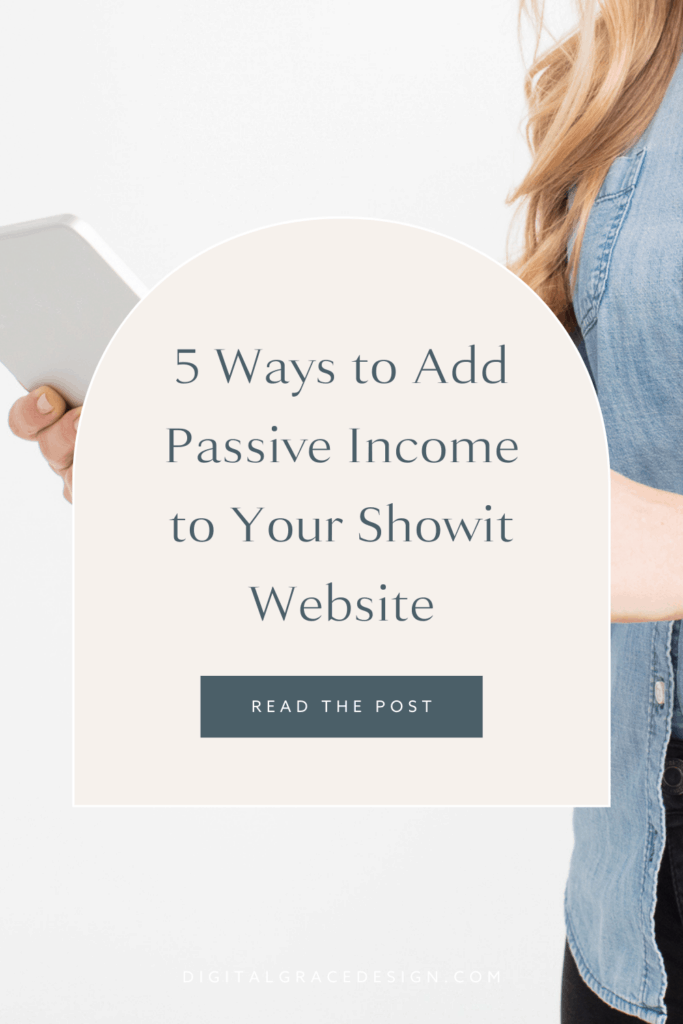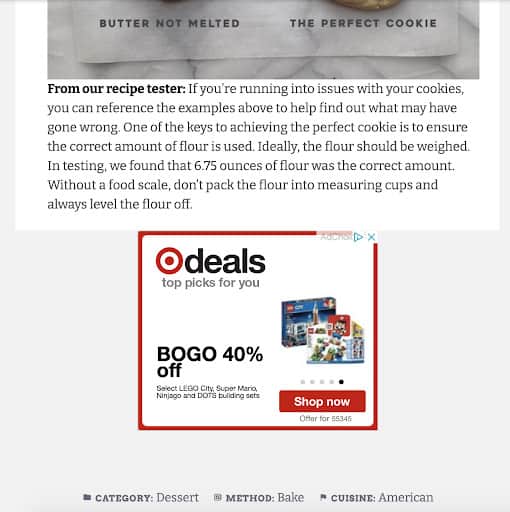Business, Creative Entrepreneurs, Photographers, Showit, Tips & Tricks, Website Design, Wedding Professionals
Do you ever feel like you’re trading your time for dollars?
As service providers, it’s easy to feel like there’s a “ceiling” to what we can earn based on the amount of time we want to work. While you can always earn more income by increasing prices, at a certain point, you may find that you can’t manufacture more time in your day to get the work done.
Of course, this doesn’t mean you should stop working with clients! I love designing Showit websites and writing copy for my clients, so I’m not about to step away from my fulfilling work either. It simply means there are benefits to exploring other income-producing projects.
Since time is a limited resource, it’s smart to find ways to generate multiple sources of income that aren’t tied to your time. This is what we call passive income.
You may have heard this term before, but what does it mean and why should you care about it? That’s what I’ll talk about for the rest of this article, along with specific strategies you can easily add to your Showit website.
What is passive income, and why does it matter?
Some people laugh and say passive income isn’t really passive because creating digital products still requires lots of effort. It doesn’t mean there’s an absence of doing work. Instead, it means putting in the work upfront so you can reap the rewards in the long term without extra heavy lifting.
Passive income doesn’t require a lot of “active” work after you properly implement or launch your passive income strategies. Instead of spending all of your time on constant content creation or time-consuming tasks, you can focus solely on maintaining your site when you have passive income strategies in place.
Another benefit of passive income is your ability to keep working with clients you love while generating additional revenue on the side. What could be better than that?
Passive income products and strategies will help you stay more present when you’re working with clients. It will also help you stay out of the “feast or famine” cycle that freelancers and service providers often find themselves in. You can ride the waves of unpredictability and slow lead generation months when you have solid passive income.
Are you feeling convinced that passive income is worth your time? Let’s go into a few passive income ideas I think you’re going to love.
5 passive income strategies to grow your revenue
Not all passive income ideas are created equal, meaning some will require more work and maintenance than others. All of these are great ideas, but you’ll want to consider your overall business strategy before choosing your best path forward.
Without further ado, let’s dig into some of my favorite passive income strategies!
Add affiliate links to your content
One of the easiest ways to start generating passive income from your blog or email list is to include affiliate links. Affiliate marketing is on rise as more entrepreneurs and content creators realize how lucrative it can be.
Affiliate marketing refers to the process of selling a product or service that’s offered by an external company. In return for selling someone else’s goods, they give you a set commission for the referral that’s tied directly to your affiliate link.
Affiliate links are typically generated automatically for you when you sign up for an affiliate program. It’s one of the most passive activities you can do in business because you can sell the affiliate products on autopilot without ever having to create the offer itself. This is why many influencers on Instagram and YouTube prioritize affiliate marketing in their business.
Although it may be tempting to sign up for hundreds of affiliate programs in the hopes of making more sales, it’s actually better to start with a few products you really love. That way, you can focus more of your attention on recommending each product rather than spreading yourself too thin.
My client and close friend Maria of Bloom & Grow Radio does this really well with her main Shop page. Instead of creating every plant-related product on her own, she links out to multiple sites through her affiliate links.
She shares everything from her recommendations for grow lights…
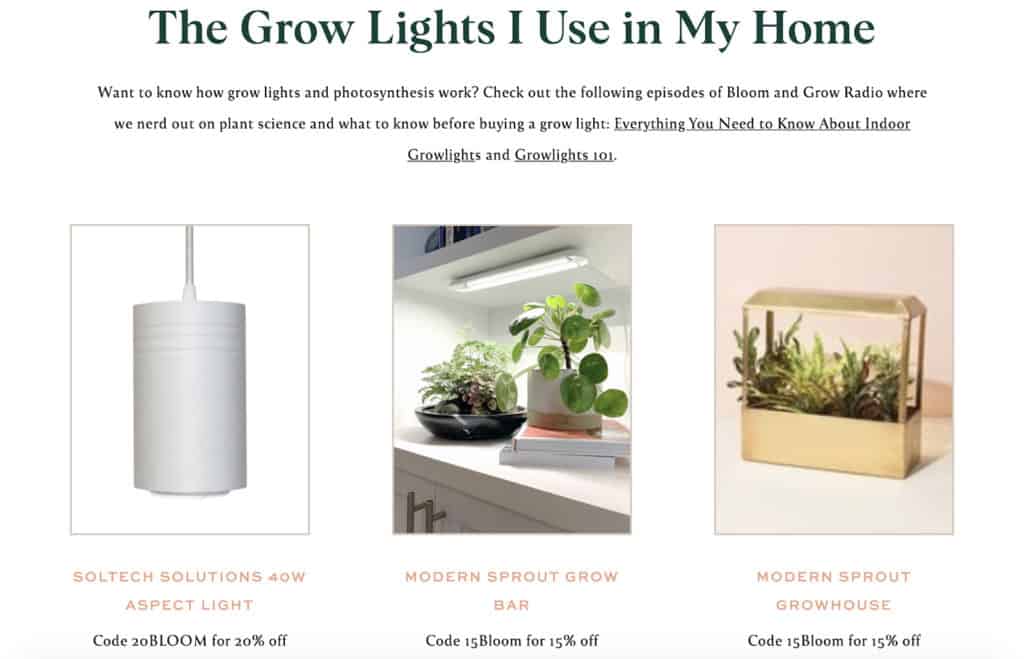
… to her favorite potting mixes and fertilizers.

By keeping all of her affiliate links on one Shop page, she’s able to create a cohesive online shopping experience for all of her podcast listeners and readers, no matter what they’re looking for. I’m so happy with how Maria’s digital shop turned out when we worked together last year!
The next time you click on a link to a recommended product, check out its URL. You might notice that it’s an affiliate link! While it’s important to include an affiliate disclosure to follow FTC laws, most of your website visitors will be happy to know a portion of their sale will go directly to you as the content creator.
Make a resource page
If you’re sold on affiliate marketing, one of the next steps you can take is to put all of your favorite affiliate products in a central place. Most entrepreneurs who do this will call it their Resources page.
Here, you can share your favorite tools, books, or any other product you use in your life or business. Remember how I shared that it’s easier to choose a few products you can recommend? This is where that comes into play!
When I created my own Resources page, I only wanted to share the things I love most. I didn’t want to create a confusing user experience by trying to recommend too many products at once. That’s why you’ll see a few organized sections with products that neatly fit into these well-defined categories.


Now, I have a specific page I can send to anyone who’s interested in learning more about what tools I use or what books I’ve learned from. Oh, and I make passive income at the same time!
Sell advertisement space on your blog
A strategy that’s even easier than affiliate marketing is selling ad space on your blog. Advertisements were more prevalent in the early days of blogging, but you’ll still see some around today. You can get started by signing up for a Google Adsense account and embedding the code into your blog.
Many bloggers feature ads on their sidebars and within the blog post itself, but it’s up to you to decide where you want them to be seen. I would caution you, though, in adding too many ads to your site. No one likes to scroll through dozens of ads while reading a blog post. You want the focus to be on your content, not ads that feel obtrusive.
The bloggers behind Pinch of Yum are a great example of how to add advertisements without distracting from their recipes. You have to scroll about five times before you see the first ad in their sidebar, and you’ll see a couple more towards the middle and end of their content. You can see for yourself in this chocolate chip cookie recipe example.
You might be wondering how much you can make from simply adding ads to your site. Since people are constantly looking for recipes, Pinch of Yum’s food blog earns a LOT of traffic from sources like Pinterest and Google. Back in 2016 when they created income reports, Pinch of Yum’s creators were generating at least $50,000 each month just from their ads. They decided to stop creating income reports since then, but I have a feeling that number has only continued to climb.
This may sound like a dreamy source of income, but keep in mind that it takes a lot of content creation efforts in order to drive these kinds of results. Also, it doesn’t hurt that they chose one of the most profitable blogging niches!
If you don’t currently have high traffic coming to your website, the passive income you earn may be small but don’t be discouraged. We all start somewhere!
Sell online courses
One of my very favorite passive income strategies is to create and launch online courses. It’s expected for the online learning industry to grow to $375 billion by 2026 compared to $200 billion in 2019. At the time of writing this article, we still find ourselves in a worldwide pandemic.
The need for quality online education has never been higher, and it’s even more apparent as online course sales continue to increase year over year.
However, if you look around Instagram or jump into Facebook groups, it may seem like everyone has already created an online course. While more courses are entering the market all the time, there’s still room for you to create a unique course that solves a specific problem for your audience.
While many people have created self-paced SEO courses in the past, I was happy to create my Simple Showit SEO course because it focuses on the Showit platform. By niching down and including it in my course’s title, it made it easier for me to sell this course and differentiate it from others.
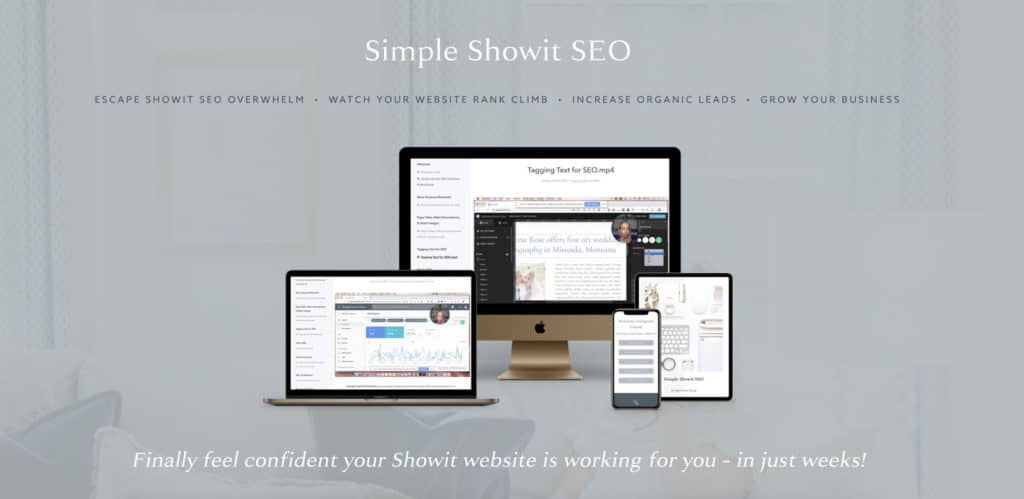
I’m so glad I took the plunge and created my course. I’ve added lessons and downloadable resources to it over time, but for the most part, the income I’ve generated from each launch has been purely passive. I also use the same main launch marketing template each time so it doesn’t take time away from my client work.
If you want to get started with selling online courses, I highly recommend hosting your courses on Podia. It’s what I use for Simple Showit SEO and I love their user-friendly experience for students and in the backend for me. It has a flat monthly fee which makes it more affordable than most course-related platforms. Go check it out for yourself with a free 14-day trial!
(And yes, that’s an affiliate link so I’m utilizing one of the passive income strategies we discussed recently. I hope you like seeing it in action!)
Create other digital products
There are far more digital products you can create and passively sell beyond online courses. Some of these digital product types are easy to design inside free tools like Canva. You can also invest in low cost Etsy or Creative Market design templates if you don’t want to start completely from scratch.
You may also want to work with a professional designer or copywriter to create your digital product, depending on how long you’ve been in business, what your budget looks like, and how cohesive you want your brand design to be. It’s completely up to you!
Here is a brief preview of the most popular digital products so you can easily get started:
Templates: Speaking of not wanting to start from scratch, downloadable templates allow you to create something once and sell it over and over again. You can create calendars, spreadsheets, planners, printable art, or even contract agreement templates like my client Sonia from Glossible.
Anything someone can buy once and continue reusing can be classified as a template. They’re relatively easy to sell since most people don’t want to begin with a blank page, so get creative with your templates!
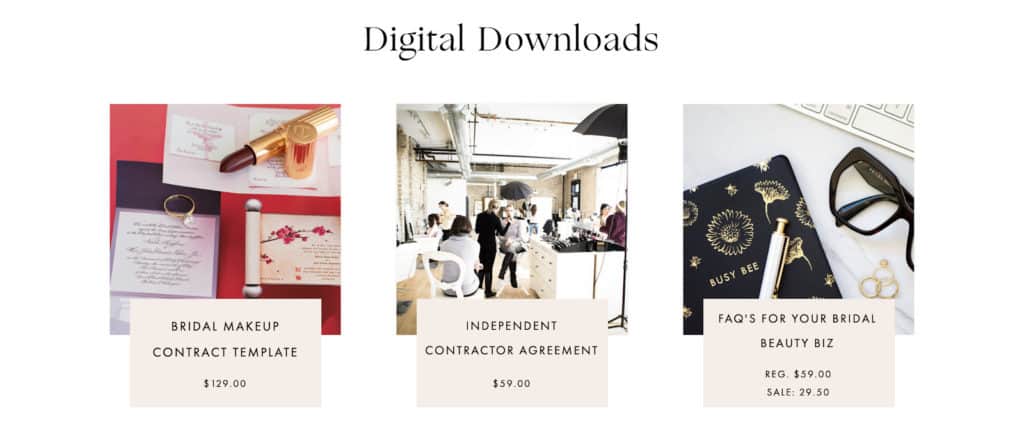
Membership communities: Do you have a lot of resources already created? Are you looking to make recurring passive income revenue? Then membership communities might be your best fit! You can offer everything from online classes, live calls, recorded interviews, office hour sessions, and more inside your membership community.
A great example of this is from Ashley and Dale, a father-daughter duo who created The Abundance Group. I’ve followed along with them for a while since we both serve wedding professionals. By keeping all of their best content in one central place, they’re able to generate more income for their business. Keep in mind that membership communities often require more active work some of the other strategies, but you also have the benefit of receiving monthly payments.
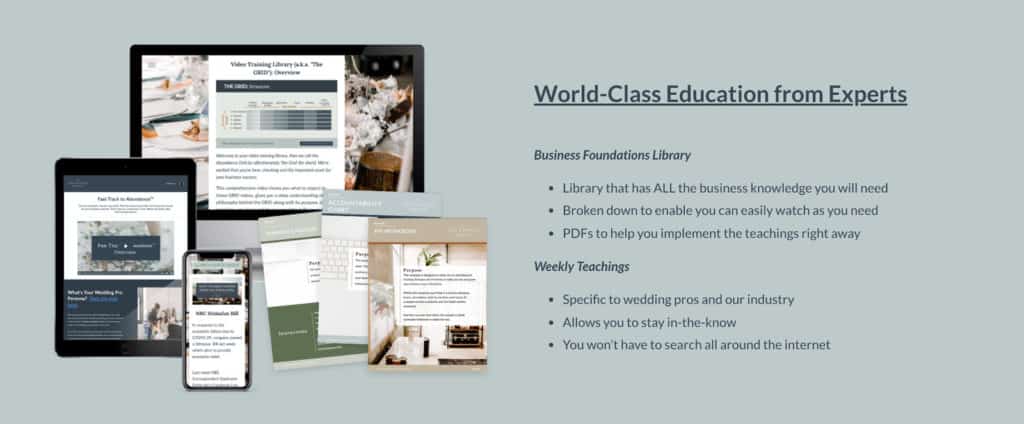
Ebooks: Do you have a lot of knowledge or expertise you’d like to share with a wider audience? There’s only so much education you can do in a 1:1 client relationship business model. If you have more to share, you may benefit from creating a digital book.
Ebooks are one of the first passive income products circling on the web. However, they look different today as more content creators are adding bonuses and sneak peeks in addition to their ebook content. One person who’s leading the way with this is Dann, the author of That Freelancer Book, who offers two months of access to his Slack community and a number of bonus material for pre-ordering his ebook.

How will you add passive income to your Showit website?
I’m really excited to see what kind of strategies you implement or passive income products you create. By now, you should have an idea of what route you want to take in your business.
To review, here are the main ways that can add passive income to your site:
- Affiliate marketing
- Resource pages
- Blog advertisements
- Online courses
- Digital products
- Templates
- Membership communities
- Ebooks
Happy creating!
